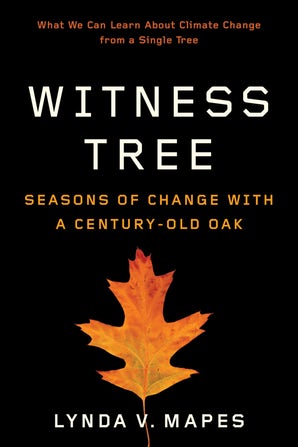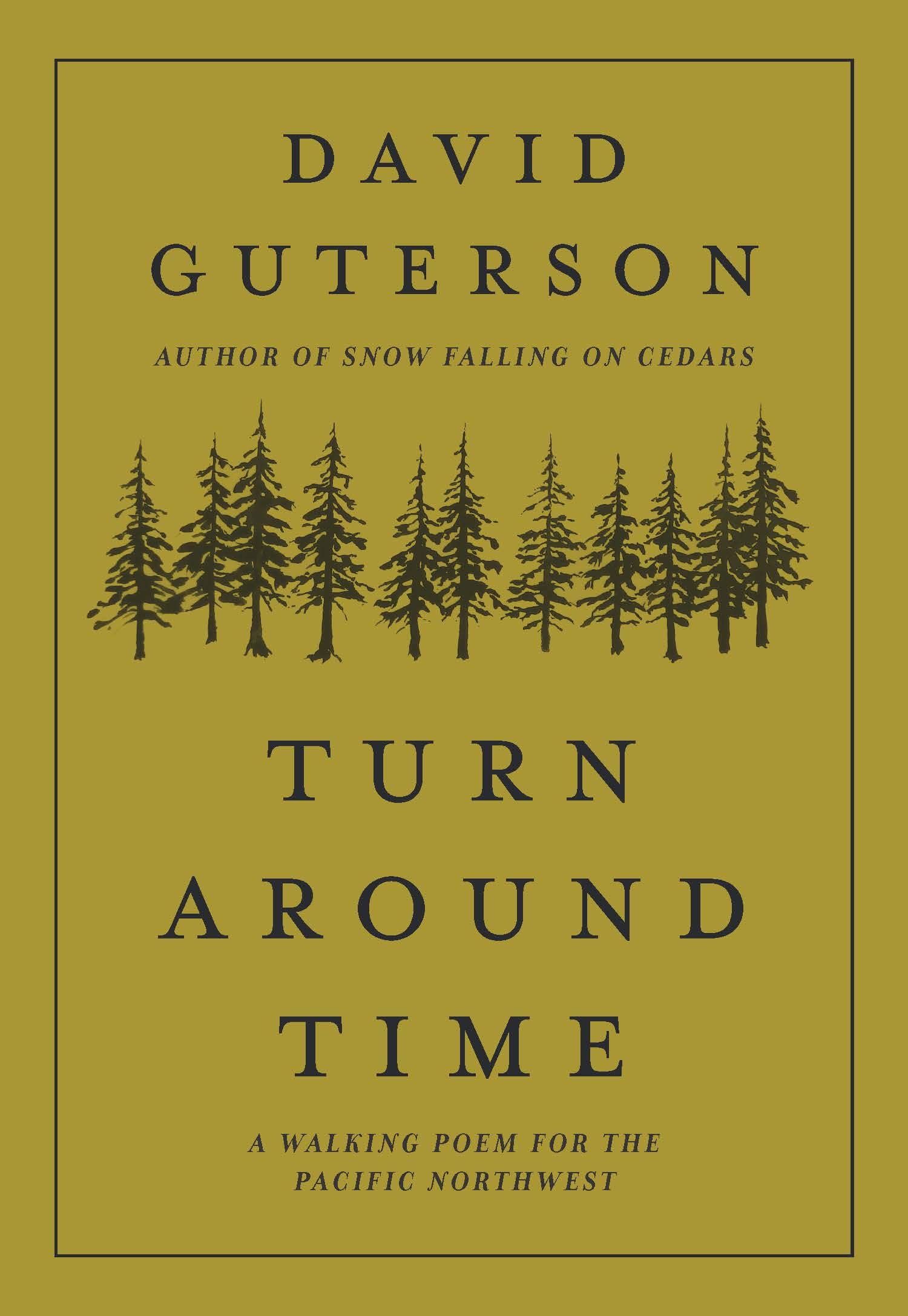The forest for the trees
"I first met this tree in the fall of 2013," Seattle Times environmental writer Lynda V. Mapes writes in her new book Witness Tree. It's a non-fiction account of Mapes's yearlong study of a single oak tree in a forest in New England. And some of the passages have the adoring attention to detail that you might expect in a romance novel:
Instead of rising straight, the oak leans hard away from the stone wall where it sprouted. It also grows in a twist, rising in a graceful twirl to the first branches of its vast, spreading crown, reaching some eight stories up in the air.
That "graceful twirl" is the kind of beautiful, specific writing that makes a reader set the book down for a moment to appreciate its artfulness. It's the kind of writing you get when a writer feels great affection for her subject. And then pair that with this passage:
It was big. So big. I couldn't see its top without dropping my head all the way back to my shoulders. It had no branches at all for the first forty feet, then flared to a wide crown that dominated its grove. It was a wild tree. If I wanted to climb it, I'd need professional help. Ropes, helmet, harness, the works. But it was old, that much was clear. It was beautiful, that was for sure.
Could Mapes sound any more smitten? But despite her obvious love for the tree, this isn't a love story, or a story of obsession. It's a story about survival. Though Mapes is our narrator throughout Witness Tree, and though she's a capable and fascinating host, the oak tree is the true protagonist, here. It's the tree's story, from start to finish.
What Mapes is doing here is studying the history of the tree, explaining the science of how it goes about its daily business, and wondering at what its future might look like. She seeks to measure the impact of climate change based on how it has affected this lone tree. She visits it through the highs and lows of New England seasons, she climbs the tree, she examines its insides. She views it from all angles:
A heavy rain will run down its trunk to its first rank of branches, where the twist of the tree's trunk pours the water off in a stream. I've lain underneath it, getting splattered, trying to photograph the silver cascade of rain and never quite capturing it.
Aside from a few random references — at one point she says the tree is "growing like a teenager" — Mapes manages to avoid anthropomorphizing the tree. She doesn't malign it by identifying it with humanity, or weighing it down with emotions. The tree is not something that we can completely understand — not the scope of its century-long life, not the complexity of the ecosystem it anchors for insects and microorganism, and not the relationship it has developed with the plants and animals around it.
Mapes is an eager and excited student. She passes along her discoveries with a certain wide-eyed enthusiasm. For instance, she seems to be positively bowled over when she learns that with a single quick vigorous shake, the common squirrel can determine whether or not an acorn is weevil-invested "with about 92 percent accuracy." And she explains the tree's circulatory system with the wonder of a lifelong learner.
But not every discovery is joyful. Mapes explains how New England forests are losing their hemlock trees at a breakneck rate because the winters aren't cold enough to fend off hemlock's natural predators anymore. And she imagines her oak tree's experience growing at the same time as the most rapid period of human development in earth's history:
It would have seen carbon dioxide levels rise from about three hundred parts per million to four hundred parts per million. It would have seen a mean annual temperature rise of about a one degree Celsius — nearly two degrees Fahrenheit. The oak lived through all those changes and also endured acid rain; witnessed the development of cars; and withstood huge increases in pollution.
Mapes makes a compelling — even haunting — case that climate change is affecting every single part of our world. By focusing on this one living thing and using it as a prism to explore the glory of nature and the shame of our careless meddling, she provides a sense of scale and a sympathetic protagonist worthy of our attention. The tree has done nothing wrong, but it bears the weight of our sins just as much as we do.
There's more than one way to witness nature, and more than one way to observe the fact that nature witnesses us. *Snow Falling on Cedars* novelist David Guterson's latest book, out this month from Mountaineers Books, is a book-length poem that tries to capture the feeling of a long hike in the Northwest woods.
In his introduction, Guterson says that Turn Around Time: A Walking Poem for the Pacific Northwest is "a trail guide at best only figuratively, and only if one conceives of life as a journey." He warns that readers should not try to orient their travels against the route described in the book. Instead, the poem is intended as a hiker's companion, a friendly nod shared on the trail between author and reader.
While Witness Tree is interested almost pathologically in the forests of the east coast, Guterson's book is obsessed with Seattle and its surroundings:
the stuff and surface of our trod and being, the fester of volcanoes splaying slag and waste
and leaving behind collapse in gray:
this is the color Kurt Cobain complained of<
in his dour elegies and canticles
This line could work nowhere else — it's the Northwest in all its glory, where damp skies drench volcanoes and soak our spirits for five months out of the year.
Guterson is a funny and accessible guide. What hungry hiker hasn't expounded on "the glory of lunch" at one time or another? What hiker hasn't occasionally been struck into silence by a wall of beautiful nature?
firs, cedars, lichens, boulders,
each totemic element of our scene
foreseen, forsworn, yet here again.
This is our waking and walking impression,
our native, tired, green formulation—
The best thing about Turn Around Time is that it doesn't exalt the hiker or make them a sainted figure slouching through the wilderness like a holy Sasquatch. The main character of Turn Around Time gets hungry and tired and peevish. He gets bored. At one point, he blurts out, "Our woods now feel like someone else's."
He loses his way, and forgets all the camaraderie and appreciation of beauty that he headed to the woods for in the first place. When there are trees everywhere you look, it's easy to forget to feel wonder. It's only when you really focus on the details of the world around you — when you see nature staring back at you — that you can see the whole big beautiful system for the miracle it truly is.
Paul is a co-founder of The Seattle Review of Books. He has written for The Progressive, Newsweek, Re/Code, the Utne Reader, the Los Angeles Times, the Seattle Times, the New York Observer, and many North American alternative weeklies. Paul has worked in the book business for two decades, starting as a bookseller (originally at Borders Books and Music, then at Boston’s grand old Brattle Bookshop and Seattle’s own Elliott Bay Book Company) and then becoming a literary critic. Formerly the books editor for the Stranger, Paul is now a fellow at Civic Ventures, a public policy incubator based out of Seattle.
Follow Paul Constant on Twitter: @paulconstant
Other recent reviews
Talk about the weather
-
Interpretative Guide to Western-Northwest Weather Forecasts
March 27, 2018
72 pages
Provided by publisherBuy on IndieBound
The man show
-
The Sexiest Man Alive
October 01, 2018
72 pages
Provided by publisherBuy online
Accidentally honest
-
The Shame of Losing
October 01, 2018
264 pages
Provided by authorBuy on IndieBound

